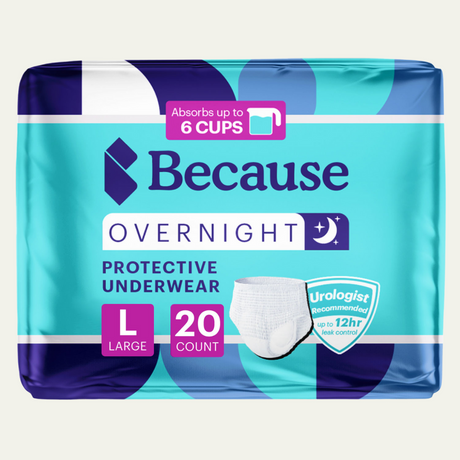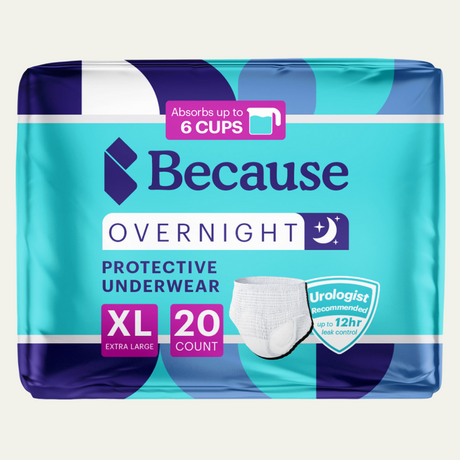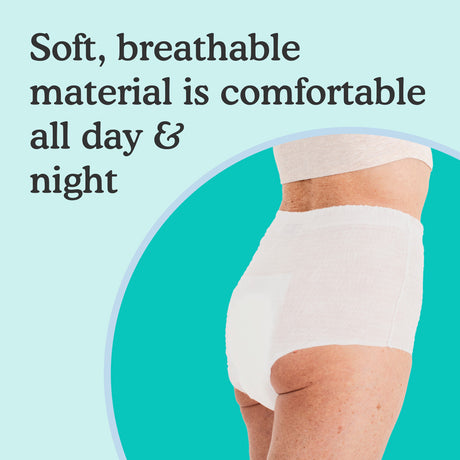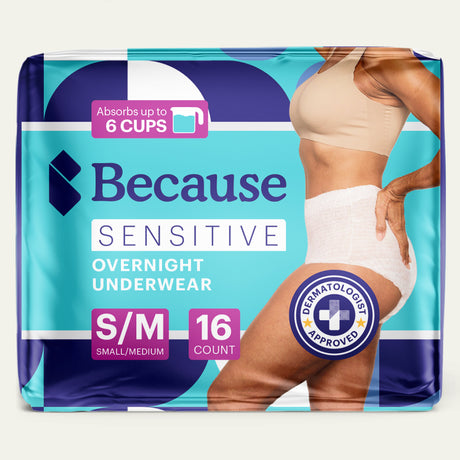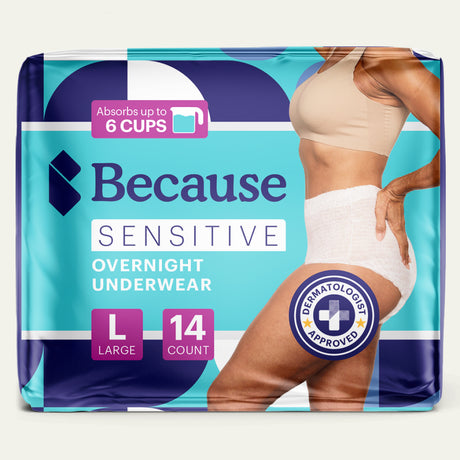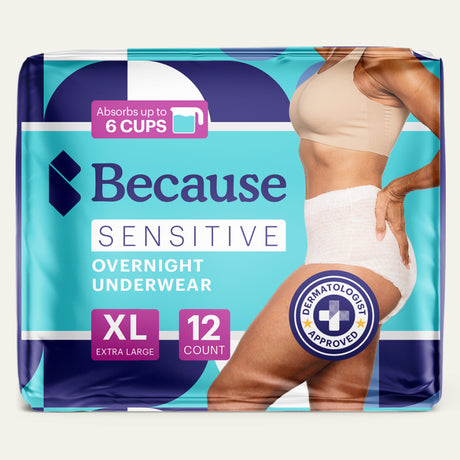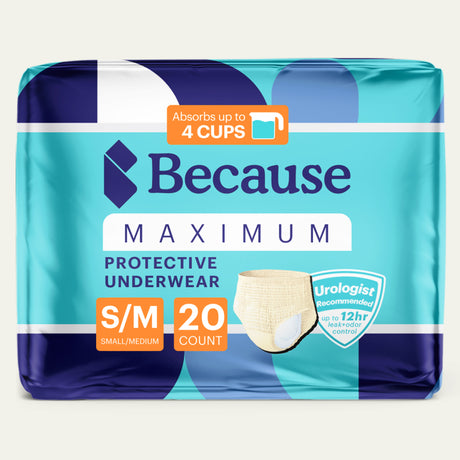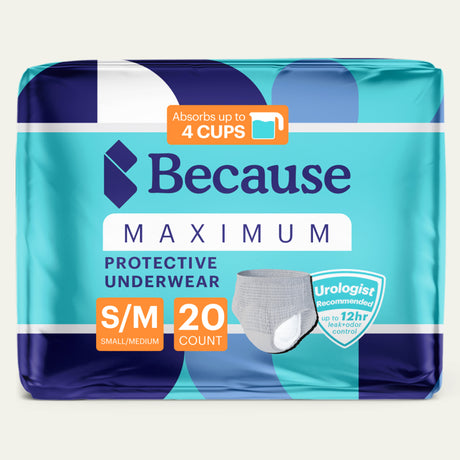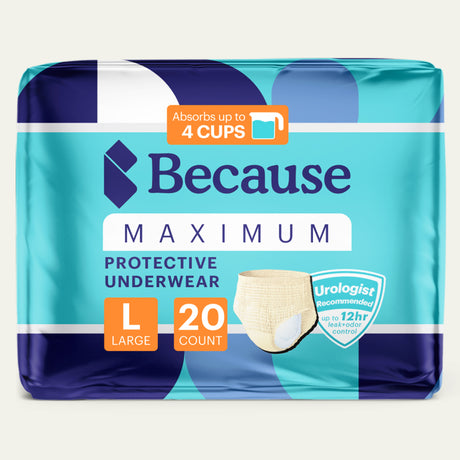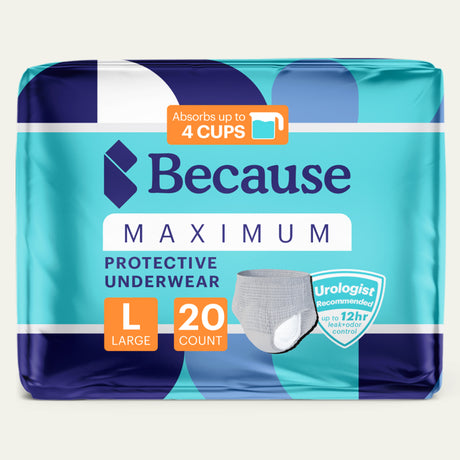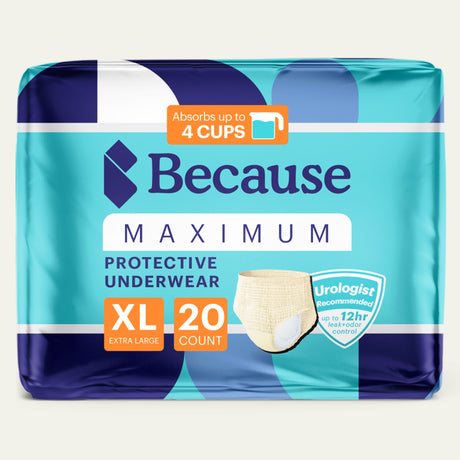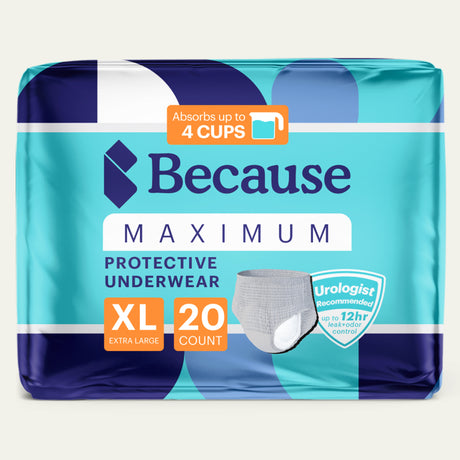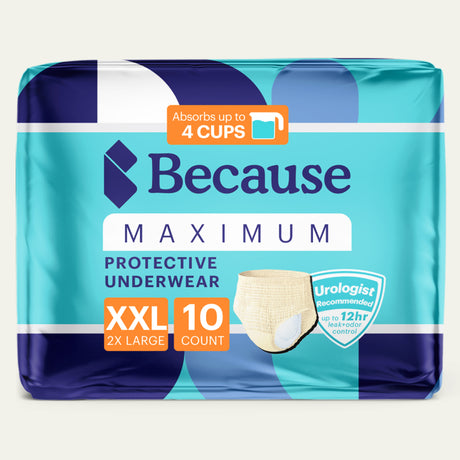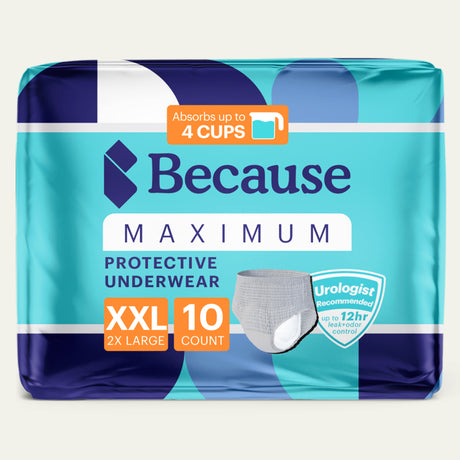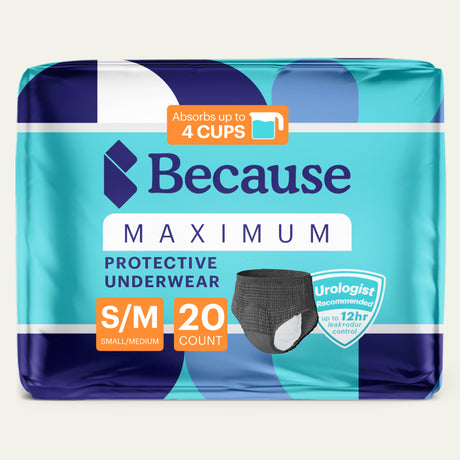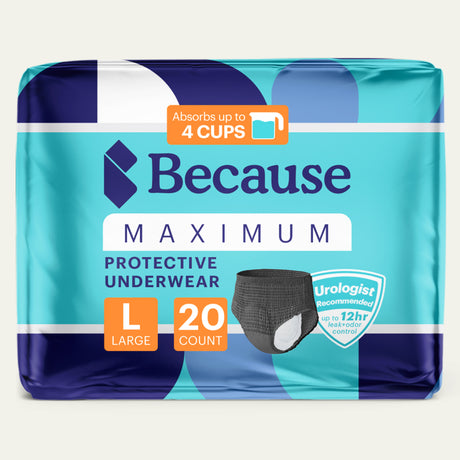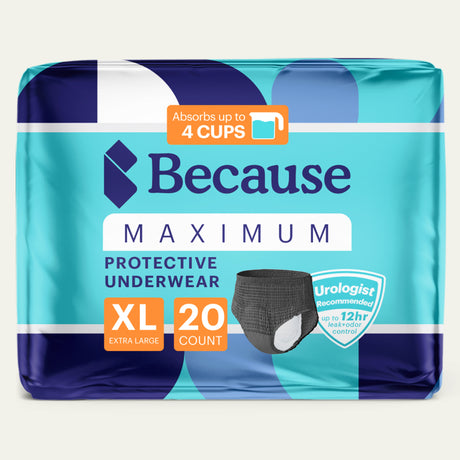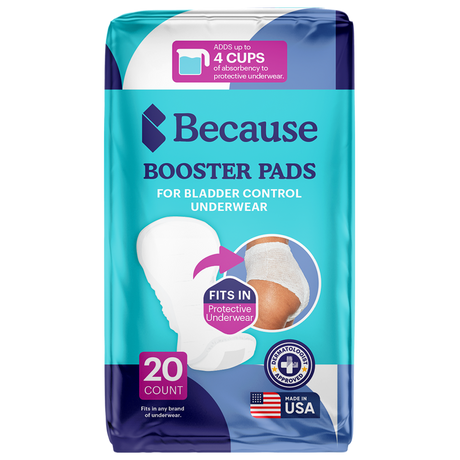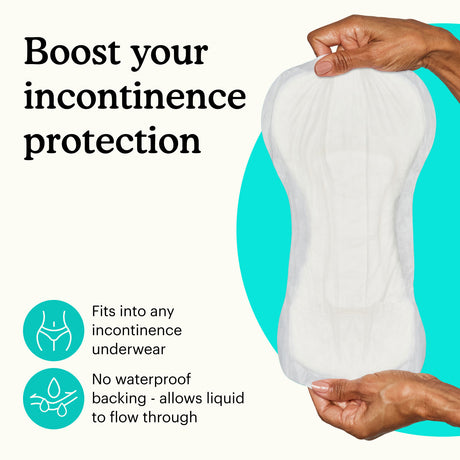Diabetes is a common medical issue that affects many Americans. In fact, around 37.3 million adults in the U.S. have diabetes. High blood sugar levels and problems with the heart, nerves, and eyes are typical health complications associated with this disease, but what may be more surprising is that diabetes is also a significant risk factor for urinary incontinence.
The good news is that there are actionable steps you can take to manage the loss of bladder control related to diabetes. In this post, we’ll explore the causes of diabetes incontinence and different ways to address the issue.
Can Diabetes Cause Incontinence?
Diabetes can cause urinary incontinence or UI. One study found that people with the disease were 2.5 times more likely to have incontinence than those who don’t.
For some people, diabetes could be the sole underlying cause of bladder problems, but often, there is more than one reason why a person experiences a loss of bladder control. Read on to learn more about the link between diabetes and incontinence.
Diabetes and Its Effects on the Body
Diabetes mellitus is a chronic health condition marked by abnormally high blood glucose or blood sugar levels. In a person without diabetes, a hormone produced by the pancreas called insulin helps to keep blood sugar in check.
Type 1 diabetes happens when the pancreas doesn’t produce insulin properly. This condition often begins during childhood or adolescence and tends to run in families. With type 2 diabetes, the body cells either don’t respond properly to insulin or the pancreas doesn’t produce enough high-quality insulin to control blood sugar. In many cases, type 2 diabetes is preventable and caused by factors like obesity and a sedentary lifestyle.
Although the causes differ, type 1 and type 2 diabetes can affect the body in several ways. Blood sugar can damage large blood vessels in the body, causing damage to the cardiovascular system, raising blood pressure, and increasing the risk of heart attack and stroke. Elevated blood glucose can also cause changes in small blood vessels, leading to nerve dysfunction, vision problems, and kidney damage.
In addition to its effects on the blood vessels, diabetes can impact the reproductive system, resulting in sexual problems like erectile dysfunction in men and vaginal dryness in women. Uncontrolled diabetes also interferes with immune system activity, so you’re at an increased risk for yeast infections, urinary tract infections (UTIs), and other types of infections if you have the disease.

The Connection Between Incontinence and Diabetes
Long-term diabetes can cause a few types of incontinence. Let's examine the effects that the condition has directly on the urinary system and how they can lead to bladder control issues.
Diabetic Neuropathy
Diabetic neuropathy is nerve damage caused by diabetes. It can affect any of the nerves in the body and interfere with the transmission of signals to and from the brain. When the nerves that control the bladder or the pelvic floor muscles that support the lower urinary tract become damaged, one of the following types of incontinence may occur:
- Overflow incontinence: With this type of incontinence, nerve problems make it difficult for the bladder to empty fully when you urinate. This problem, known as urinary retention, can lead to the bladder overfilling. When this happens, urine suddenly leaks out.
- Urge incontinence: Damage to the nerves that control the bladder muscles can cause the organ to contract irregularly, leading to a strong, sudden urge to urinate. Some people develop overactive bladder, a form of incontinence where you suddenly need to pee many times during the day.
- Stress incontinence: A combination of weak pelvic floor muscles and damage to the nerves that control them can cause urine to leak out whenever force gets applied to the lower abdomen and the bladder, such as when you exercise, cough, sneeze, or lift something heavy.
Neuropathy can also injure the nerves that control the bowel, causing fecal incontinence—the inability to control bowel movements.
High Blood Glucose Levels
In people with uncontrolled diabetes, excess glucose in the blood increases urine production as the body attempts to eliminate the sugar. As urination increases, so does thirst, which in turn produces more urine. This cycle can lead to functional incontinence, which is an inability to hold in urine until you can reach the toilet. Older adults with mobility issues are particularly susceptible to this type of diabetes incontinence.
Diabetes Medications
Sometimes, diabetes treatments contribute to incontinence. Some oral diabetes medications work by directing excess sugar into the urine. The presence of more sugar in the bladder can lead to bladder irritation, which can worsen an overactive bladder and other forms of incontinence.
The Symptoms of Diabetic Bladder Dysfunction
The symptoms of diabetes incontinence vary. If you have bladder dysfunction due to the disease, you may experience:
- More frequent urination
- Urgent need to urinate
- Urine leakage or a total loss of bladder control
- Difficulty starting the stream of urine when you use the toilet
- Feeling like you still need to urinate even after you’ve used the bathroom
- Not being able to make it to the bathroom in time when you feel the urge to urinate
Risk Factors for Diabetes-Related Incontinence
While anyone with diabetes may develop bladder problems, certain people are at a greater risk. Some risk factors for the condition include:
- Age and gender: Postmenopausal women are already at an increased risk for incontinence due to the effects that hormone changes have on the bladder and pelvic floor muscles.
- Duration of diabetes: Diabetes complications are progressive, meaning they develop slowly over time. The risk of urinary incontinence and other problems related to diabetes increases the longer you have the condition.
- Poor blood sugar control: When controlled through medications, insulin, lifestyle changes, and other treatments, diabetes is less likely to cause damage to the body. Sticking to your treatment plan is one of the main ways to prevent incontinence.
- Weight: Obesity can make diabetes harder to control. As a result, people with a high body mass index (BMI) are at a higher risk for complications like incontinence. Excess body weight also puts more pressure on the bladder, which can raise the risk of stress incontinence.
- Smoking: Tobacco use is linked to an increased likelihood of diabetes complications, including incontinence.
- High blood pressure: Hypertension can also cause damage to blood vessels, compounding the effects of diabetes.

Preventing and Managing Incontinence and Diabetes
Although there is no cure for diabetes or incontinence associated with the disease, you can take steps to reduce your risk of developing it or improve your symptoms if you already have it.
Weight Management and Lifestyle Modifications
A healthy lifestyle can greatly improve outcomes for people with diabetes. Some lifestyle changes that you can make include:
- Eating a balanced diet: A healthy diet developed by a registered dietitian or your doctor can help keep your blood sugar levels in check. If you have incontinence, avoiding bladder irritants like caffeine, spicy foods, and acidic foods may improve your symptoms. Getting enough fiber to promote regular bowel movements is also important, as constipation can worsen urinary incontinence.
- Exercising regularly: Physical activity improves blood flow and lowers blood sugar, reducing the risk of diabetes complications.
- Weight loss: If you’re overweight, a combination of a healthy diet and regular exercise can help you lose extra weight to improve blood sugar levels and reduce pressure on the bladder.
- Avoiding alcohol: Even moderate consumption of alcoholic drinks can make diabetes difficult to control. Alcohol is also a bladder irritant and a diuretic, so it can make bladder control issues worse.
- Staying hydrated: Dehydration can make urine more concentrated, leading to irritation and worse incontinence symptoms.
- Quitting smoking: Medications, nicotine replacement therapy, and other interventions can help you quit and lower your risk of developing diabetes complications and a number of other medical conditions like heart disease and lung cancer.
Medication
Depending on the type of incontinence you have, your doctor may prescribe medications for your bladder control symptoms. This is especially true if you have severe incontinence or lifestyle changes alone don't improve your symptoms. These medications may include:
- Mirabegron: This medication causes the bladder muscles to contract so that it can hold more urine. Doctors typically prescribe it for urge incontinence.
- Anticholinergics: Drugs from this class act on the nervous system and can improve symptoms of overactive bladder and urge incontinence. They include darifenacin, fesoterodine, oxybutynin, solifenacin, tolterodine, and trospium chloride.
- Alpha blockers: These drugs act like muscle relaxers for the bladder so that it can empty more fully. Drugs from this class include alfuzosin, doxazosin, silodosin, and tamsulosin.
- Estrogen: Healthcare providers may prescribe estrogen creams, patches, or vaginal rings for diabetic women who suffer from stress incontinence. Estrogen may improve muscle tone to reduce urine leakage.
If your diabetes medication contributes to your incontinence symptoms, talk to your doctor. They may be able to prescribe a different drug to manage diabetes.
Muscle Strengthening and Bladder Training Techniques
No matter what type of incontinence you have, pelvic floor exercises and bladder training may improve your symptoms. A physical therapist can teach you how to perform Kegel exercises that involve tensing and relaxing your pelvic floor and other exercises to increase muscle tone and provide more support for your bladder.
Bladder training involves creating a regular schedule for bathroom visits. Even if you don’t feel like you need to urinate when a scheduled toilet break arrives, you still try to pee. Over time, your body may adapt to the schedule, making you less likely to experience urinary urgency and leakage.
Surgery and Other Interventions
When lifestyle changes don’t fully address incontinence, medical providers may recommend other interventions, such as:
- Urethral inserts: These inserts are tiny tampon-like devices worn in the urethra to absorb urine leakage.
- Pessaries: Pessaries are silicone rings worn inside the vagina to support the bladder.
- Bulking injections: Injectables like Bulkamid can strengthen the urethra to lower the likelihood of leaks.
- Botox: Botox bladder injections that may reduce muscle contractions to treat overactive bladder or urge incontinence.
- Sacral nerve stimulation: This surgical procedure places a small stimulator at the base of the spine that delivers mild electrical current to stimulate the bladder nerves.
- Sling procedure: This is a surgical procedure where a mesh sling is placed in the lower abdomen to support the lower urinary tract and treat stress incontinence.
- Artificial sphincter: This is a surgical procedure that places a cuff around the neck of the bladder. The cuff is controlled using a valve implanted under your skin.

Tips for Coping with Diabetes Incontinence
If you have diabetes incontinence, self-care can help you manage the effects of urine leakage.
Coping with Leaks and Accidents
Bladder protection products absorb urine and lock it away so you stay dry. You can choose from pads and guards that you place inside your underwear or incontinence underwear that you wear instead of your usual undergarments. Moderate absorbency products may be the best solution for light, occasional leakage. Maximum and overnight absorbency products are ideal for those with moderate to severe incontinence.
In some cases, Medicare Part C, Medicaid, and private health insurance may help you pay for bladder protection products. Generally, your doctor will need to write you a prescription to show that they’re medically necessary.
How to Stay Comfortable and Confident
To look and feel your best while using incontinence protection products, follow these tips:
- Choose incontinence underwear that’s the right size for you.
- Change your incontinence protection as soon as possible after leaks occur.
- Cleanse your skin with a cleansing spray or wipes when you change your incontinence pad or underwear to control odors and protect your skin.
- Apply a barrier cream to your skin to protect it from moisture and reduce the risk of irritation.
- Keep disposal bags with you on-the-go, so you can discreetly throw used incontinence protection products away.
Do you struggle with diabetes incontinence? Take our bladder protection quiz and get a sample pack to try.
Take The Quiz
If you're struggling with incontinence, join one of our private support groups today!
Women's Incontinence Support Group
Men's Incontinence Support Group
Sources:
Izci Y, Topsever P, Filiz TM, Cinar ND, Uludağ C, Lagro-Janssen T. The association between diabetes mellitus and urinary incontinence in adult women. Int Urogynecol J Pelvic Floor Dysfunct. 2009 Aug;20(8):947-52. doi: 10.1007/s00192-009-0888-8. Epub 2009 Apr 30. PMID: 19404561; PMCID: PMC2706373.
Centers for Disease Control and Prevention. (2021). National diabetes statistics report, 2020. Retrieved from https://www.cdc.gov/diabetes/data/statistics-report/index.html



